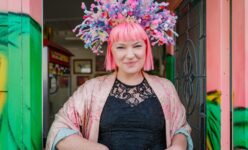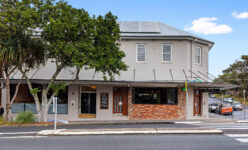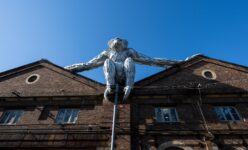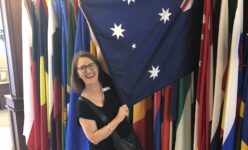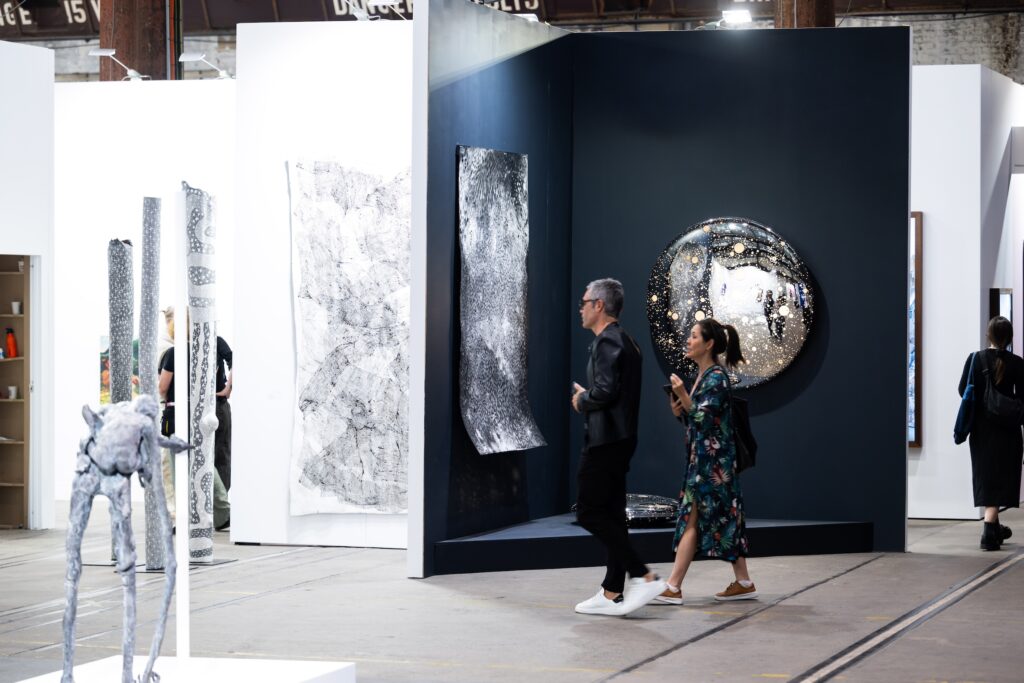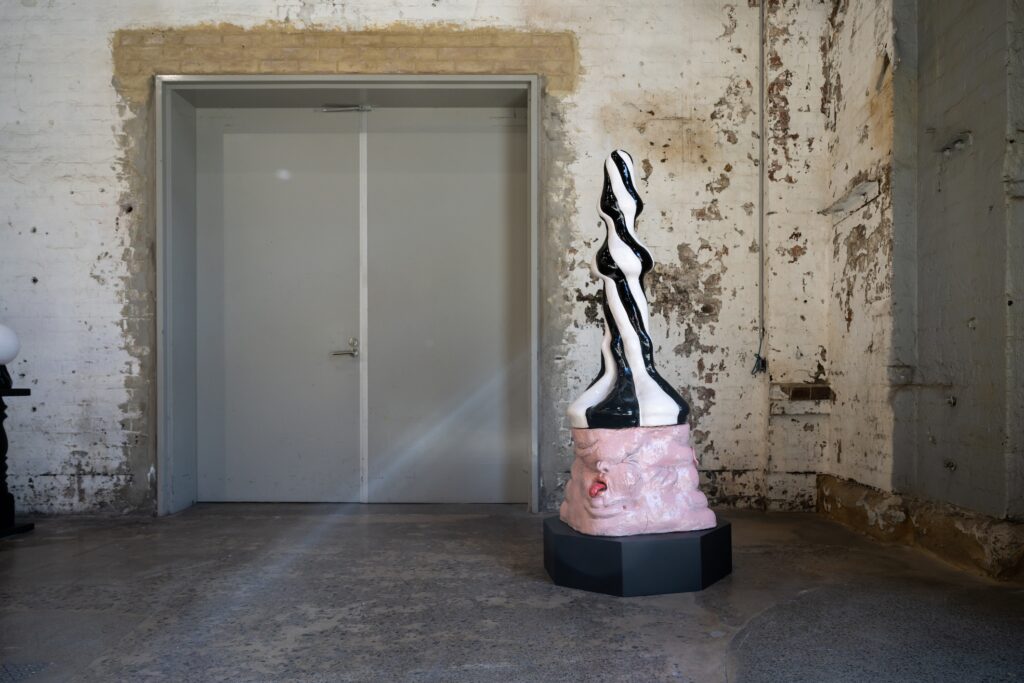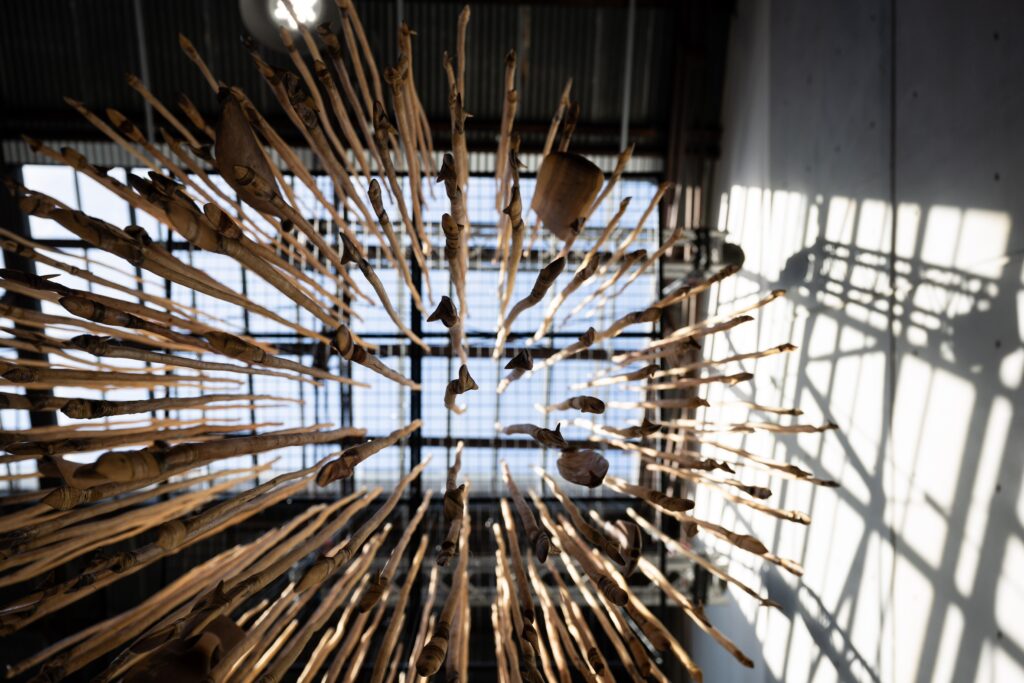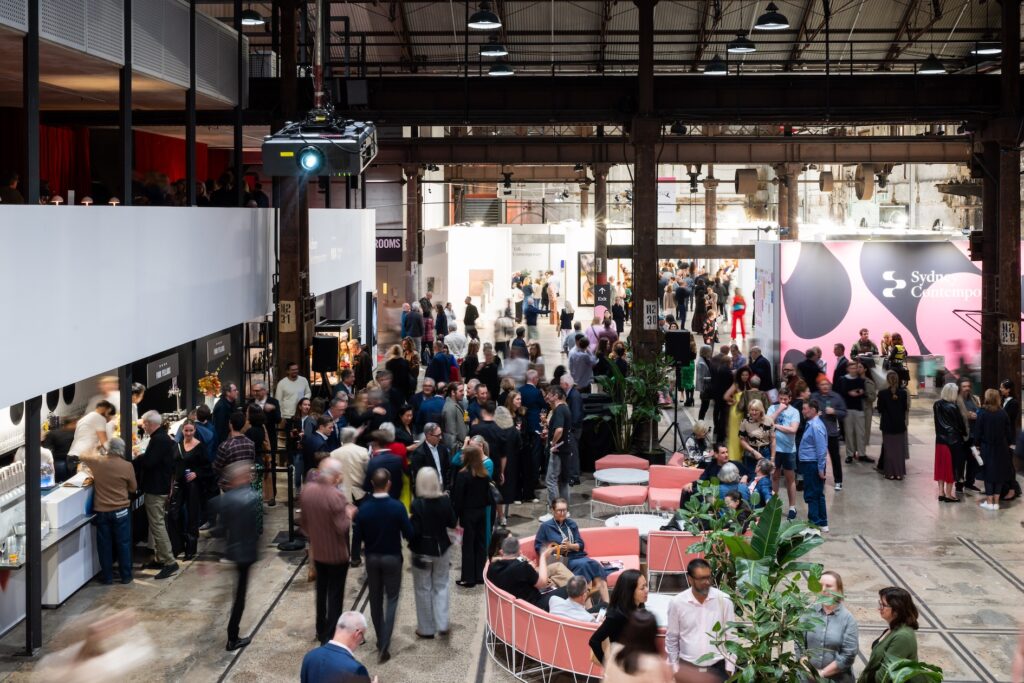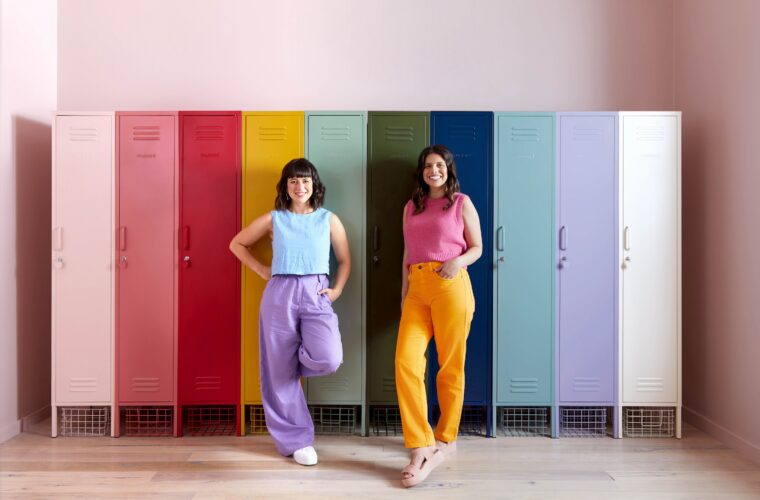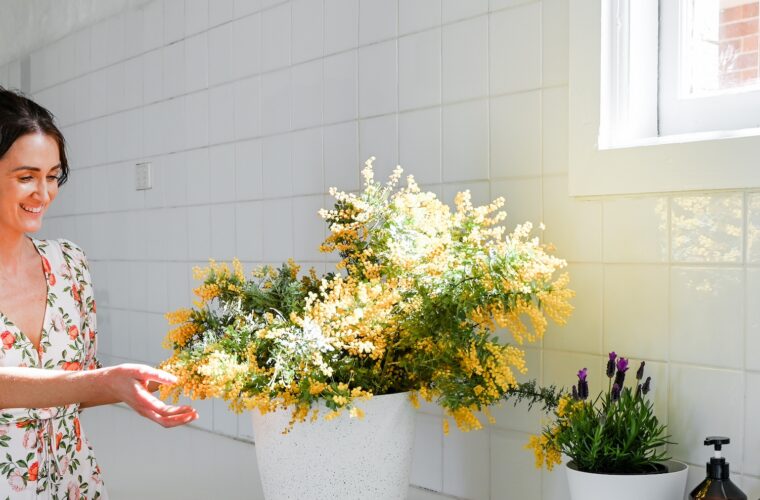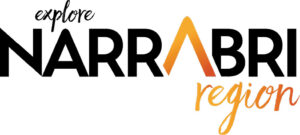Your cart is currently empty!
I recently travelled to Sydney to attend Sydney Contemporary, one of Australia’s biggest art fairs. For those of you have never been, art fairs are commercially driven events that bring together artists, art galleries, collectors, and art enthusiasts to one (often huge) space designed for encountering and purchasing art. At their core, art fairs are all about business, providing a platform for galleries to spotlight their artists and connect with both seasoned and emerging collectors. It’s a marketplace for contemporary and fine art that doubles as a networking platform for artists and industry professionals to forge valuable connections or simply bump into each other amid the bustle.
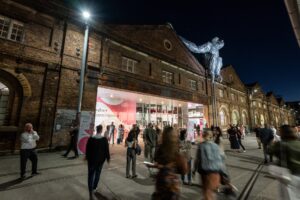
I know it is vulgar to discuss money matters… but we are talking about a lot of money. For a gallery, a booth costs $673 +gst per square meter for the five-day fair, the smallest gallery booth at 30 square metres will cost $20,250… and don’t forget to add in the gst. It is a big outlay, and one would imagine that galleries feel significant pressure to make a return on that investment. But Sydney Contemporary does boast the highest concentration of art sales annually in Australasia, with an estimated $21 millon achieved in 2023, and this year at a time when the art market has been flat, the reports post fair were positive.
Sydney Contemporary
I always make it a point to get to Sydney Contemporary. In the six hours of the Collector’s Preview, I can see more art and meet with more of my gallery colleagues than I do in a full 12 months of sporadic travel. I don’t go to buy art, although there were several works I would have happily taken home with me. I go to immerse myself in art and people and to see if there are any interesting new artists or trends that pique my curatorial interest. I’m there to tap into the zeitgeist. Here’s a quick rundown of my experience this year.
As we arrived (I was with a visiting artist and an art collector from the region), we were greeted by Lisa Roet’s massive inflatable gibbon perched on the roof of Carriageworks. Roet’s practice is focused on primates and environmental conservation, (she was even commissioned by the Jane Goodall Institute), in this instance it also played the crowd-pleaser and was no doubt the subject of numerous Instagram posts. We lined up, our passes were scanned, we grabbed a map and then we were inside. We arrived just after 2pm at the Collector’s Preview and already there were plenty of people about.
The first stand we encountered was Utopia Art Sydney and we immediately beelined to the large painting by Emily Kame Kngwarreye, which had already received media attention for being the most valuable work on sale in 2024. It was stunning. While here, I spoke to the Utopia team about some upcoming collaborative projects (work, work, work). This was the start of a repetitive journey of booth after booth of art, punctuated by numerous stops to chat.
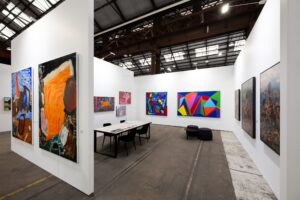
Two hours into the fair, having only covered a quarter of the 85 gallery booths, we stopped for our first break and glass of wine. While we waited to be served, I took in SABBIA Gallery which was showing stoneware sculptures by Alfred Lowe who is an Arrernte person from Snake Well in the central desert, north of Alice Springs. I loved his work and thought it was one of the more memorable exhibitions of the fair… but I am easily seduced by colour and ceramic vessels. After a brief sit and beverage, we carried on, trying to always make note of where we were starting and stopping so that we didn’t miss anything – while also being constantly distracted and pulled in different directions.
One of my companions became captivated by a painting by Nyapanyapa Yunupingu at Roslyn Oxley Gallery, marked with a half dot, meaning it was on hold but not yet sold. There was a fleeting hope, but in the end, she missed out on it. The thrill of desire, impulse, and sometimes disappointment is all part of the fair experience. As fatigue set in after four and a half hours, we took another break – this time with champagne. My feet were sore, and everything was starting to blur together. Fairs are overwhelming; while you see so much art, you often forget much of what you saw as your eyes tire. Still, we powered through, completing the main circuit before heading to the expanded Works on Paper section. This area felt less claustrophobic than in previous years, and included more galleries showing significant works. We made it around the entire fair just before the 8pm preview closing. Exhausted, hungry, and thrilled with our day, we headed to Spice Alley for dinner before collapsing back at our hotel.
My overall impression of this year’s fair was that it played it a bit safe, with much of it feeling familiar from last year. While I saw phenomenal artwork, I didn’t notice any groundbreaking new directions in contemporary art. Neon colours still dominated, leaving a saturated impression.
Indian Art Fair
Earlier this year, I traveled to New Delhi for an exhibition NERAM collaborated on, which gave me the chance to attend the Indian Art Fair. Slightly larger than Sydney Contemporary, it featured 100 exhibitors from India and around the world. Despite being far from home, the Indian Art Fair felt very familiar. I encountered a lot of new art, but also recognised common trends such as a prevalence of textile-based practices and the prominence of Aboriginal or tribal art that I have also observed at home. I received an excellent condensed education about contemporary Indian art which is a vibrant and evolving field that reflects the diverse cultural, social, and political landscape of the country. Centuries of cultural tradition are blended with modern mediums and techniques in artwork that reflect India’s diverse cultural and political landscape. There has been a surge of popular interest in art in India that has been growing ever since COVID, with an increase in audiences and collectors. It felt like the scene was pulsing, the energy was frenetic, and it was a thrilling place to get swept along.
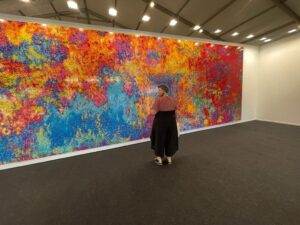
For any art lovers out there, I highly recommend attending an art fair at least once. Wear comfortable shoes, bring a water bottle, and eat before you go. Take a friend to be your voice of reason (or encouragement) when the impulse to buy art grabs you. Most of all, have fun and get lost in the art!
PS – Five artists from India I love: Youdhisthir Maharjan, Manjunath Kamath, Raj Shahni, Neerja Peters and Raghu Rai.




